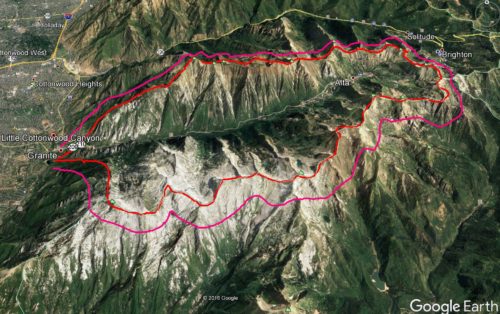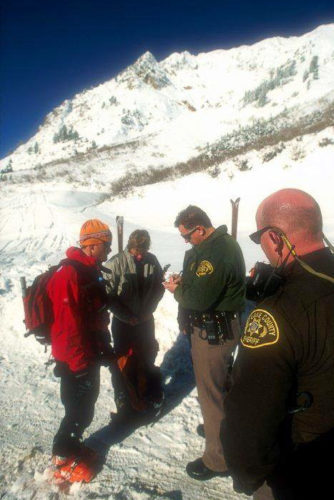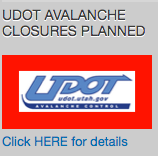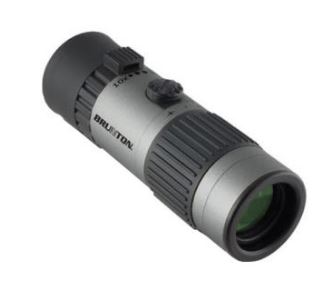Little Cottonwood Canyon Closed for Backcountry Skiing
It was only a matter of time before this happened. When I was working as an Avalanche Forecaster, I heard that closing the Little Cottonwood Road during one of the big three day weekends costs the ski resorts (Alta and Snowbird) over a million dollars a day. The road is controlled by artillery, which means that even a single backcountry skier can disrupt the shooting process by touring in a targeted zone, which will delay the road opening. As such, UDOT has now instituted a top-to-bottom, wall-to-wall backcountry closure on not only ALL of Little Cottonwood Canyon, but even a kilometer beyond the ridgeline in the overshoot area while they are controlling it. This includes overnight camping, the far reaches of Hogum Fork, Red Pine Lakes, Pfiefferhorn and the Y-Couloir. You are supposed to follow UDOT on Twitter for closures and opening. Harshtag.

All of Little Cottonwood Canyon (outlined in red) PLUS a 1km buffer over the ridgeline (in pink) will be closed for backcountry use when UDOT is shooting, and even 12 hours before.
The backcountry (and only the backcountry) will be closed from 8:00pm the day before until the following day when UDOT tweets all clear. Except if they call for an interlodge, the resorts will not be affected by this closure at all. I’m also guessing that this will just be a first step in LCC backcountry closures as 36+ slide paths hit the road. Even after being controlled by explosives, if a backcountry skier unintentionally triggers a slide which remotely threatens the road, it will be an easy excuse for UDOT to close it. The obvious and easy choices would be Tanners, White Pine Couloir, Little Pine, Mt. Superior, Flagstaff and Emma Ridge.
Paranoid? Perhaps, but I’ve seen it before and heard mumblings about it from people close to the subject. The photo below is a case in point where a backcountry skier unintentionally triggered an avalanche near Mt. Superior (which didn’t even hit the road) and Alta Central called it in to the Salt Lake County Sheriff, who patiently waited to issue vague citations for non existant rules violations. Nothing came of it except for a lingering excuse to close such terrain to backcountry skiing and a new SL County closure ordinance #13.12.010. This time you will be ticketed.

“Okay, two cheese Danish, a cinnamon twist, two maple bars and a 64oz Dirty Dr. Pepper. Anything else for you today?” Trading digits with the SLC Sheriffs. Photo: Carl Skoog
The ultimate solution to this would be to eliminate shooting 105mm howitzers in heavily populated urban areas and build avalanche-proof transportation up Little Cottonwood Canyon – an idea that was nuked early on in the Mountain Accord talks as being too favorable to Alta and Snowbird. That may be, but the resorts certainly aren’t hurting from a backcountry closure – they’ll still be making money and there will still be traffic jams. The only thing that has changed is a reduction of public access to public land.
A full copy of the notice from Paul Diegel of the Utah Avalanche Center: https://utahavalanchecenter.org/blog/28265
The Utah Department of Transportation (UDOT) is implementing a revised policy for backcountry closures in Little Cottonwood Canyon this winter to help get SR 210 open quickly and safely, keep it open, and to reduce the likelihood of backcountry travelers exposed to avalanche explosives work. UDOT has thousands of people waiting on them to reduce the avalanche hazard and safely open the road and the sighting of a single person or even evidence of a person near their artillery targets can delay opening for hours. For this reason, they will be enforcing a complete closure of all backcountry in Little Cottonwood Canyon the night before any planned avalanche mitigation work. If this revised plan does not work, more restrictive closures may be needed.
If you don’t want your early-morning mountain therapy session to be shut down, it would be wise to pay attention to UDOT activity this winter.
Details of the new policy:
- In a typical storm scenario, all Little Cottonwood Canyon backcountry will be closed at 8 PM the evening before an anticipated 6:30 AM shoot. The most likely opening time will be 8 AM. This includes areas on both sides of the road accessed from White Pine trailhead.
- The closure includes everything within 1 km of a target. This includes ridgelines and a portion of the backside. A closure is not a recommendation. Closures are enforced by Salt Lake County Ordinance 13.12.010 – Closed or unsafe areas and Town of Alta Ordinance 5-4-1: AUTHORITY TO PROHIBIT OUTDOOR TRAVEL. Violators are subject to arrest.
- If the opening is going to be later than 8:30 AM, UDOT will post updates.
- Backcountry closures will be announced by 8 PM the night before anticipated closures. Sometimes the weather serves up surprises, and it’s possible that a planned closure won’t happen or that plans will change in the middle of the night. But every effort will be made to finalize a plan the night before and stick with it.
- Announcements will be made on Twitter (#UDOTavy)
- The Utah Avalanche Center (#UACWasatch) will retweet the UDOTavy message.
- Backcountry road closures will be announced in the SLC advisory and in the Dawn Patrol Hotline
- A bright red UDOT message will appear on UAC pages

Some suggestion for avoiding closed backcountry terrain:
- Subscribe to the UDOTavy and the #UACWasatch twitter feeds and receive them via text Instructions to get either Twitter feed via text
- Call the UAC Dawn Patrol Hotline before you go out (888-999-4019 option 8, generally updated by 5 AM)
- Check utahavalanchecenter.org before you go out
- On days that you have any reason to believe that control work will be done, plan to ride somewhere besides LCC. Big Cottonwood Canyon avalanche explosives work will be required occasionally and will be communicated in the same way. Much less often, though, and typically with more advance warning.
- When closures are in effect, stay away from the LCC ridgelines, regardless of where you start your tour
UDOT is committed to keeping the road open to provide safe canyon access to all of us. Evidence of anyone in a target area brings all avalanche explosives work to a halt. To say the military weapons used for avalanche explosives work are extremely dangerous is an understatement. One accident involving explosives and the public will likely shut down all highway avalanche explosive work in the US. Living so close to the Greatest Snow on Earth is a big part of why so many of us live here, but sometimes the weather, terrain, and number of other people creates a challenge. Be smart and let the highway crews do their job.
________________________________
Help support StraightChuter.com and zoom in on some target rich sights with a pair of Brunton Echo Zoom Monocular 10-30×21 from Backcountry.com. Click on the photo below.
Category: Announcements, Wasatch Mountains










another utah BS rule…
How many days a year do you expect this will affect access for you?
$1,000,000./day? You’re not being paranoid. Money talks, bulls… well you know.
I don’t think its sad times necessarily… Think about it this way, those of us travelling up that highway to go skiing are “buying the ticket” to travel into avalanche terrain, the guy driving the SYSCO truck has just as much right to be there but it’s not necessarily his choice. The folks at UDOT are doing their job to protect everyone in that canyon, not just the ski areas interests. The problem is that our mountain community failed to create a social contract around deterring behavior like travelling into areas where UDOT is working in a similar way that we started publicly shaming people who weren’t wearing a beacon, shovel, probe. We needed to learn to all live, work, and play together before this happened but we didn’t so much…
I would very much like to hear informed voices chime in as to how this will greatly benefit Powderbirds. Lot less competition for untracked powder when hikers can’t even head up the canyon until shooting finishes…
Yes, this policy seems a little heavy-handed but safety is a real concern as well.
Here is another example of loved to death. Lots of people want a limited resource: camping spots in National Parks, climbing routes at the crag, fishing on the Provo, and the world-famous powder of Little Cottonwood Canyon. My tiny brain fails to come up with a solution. What do folks think is the better answer?
But the real issue here is that we have decided against doing what the rest of the world does when distinct avalanche paths cross roads – build sheds. Sheds would eliminate the danger and the need for UDOT’s control program. Problem solved. Shed could me made to blend in to the landscape and be fully vegetated. It really is a mystery as to why this is not supported?
Hi Ty – I agree and think that snow sheds or relocating the road would solve many problems. The old road/rail used to be down near the creek – I have no idea why they recut it to be up in the slide paths. I think part of the snowshed funding problem is that the road, despite all of its shortcomings, has a surprisingly good safety record (in large part to UDOTs efforts), which makes it hard to justify spending money on it. Highway 6 had tons of fatalities, which is why they put so much money into fixing it.
Hi DC – Considering the Wasatch Powderbird Guides do the helicopter contract bombing for UDOT, I’m guessing the backcountry will be closed for quite a while. ;)